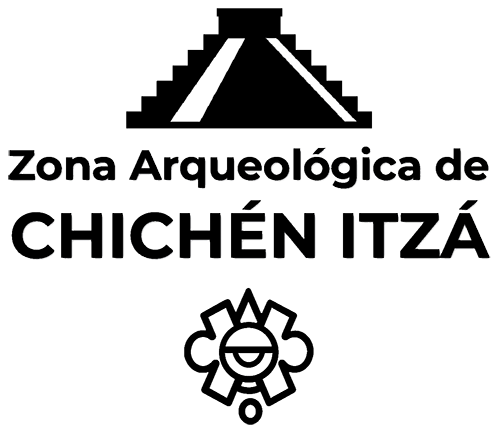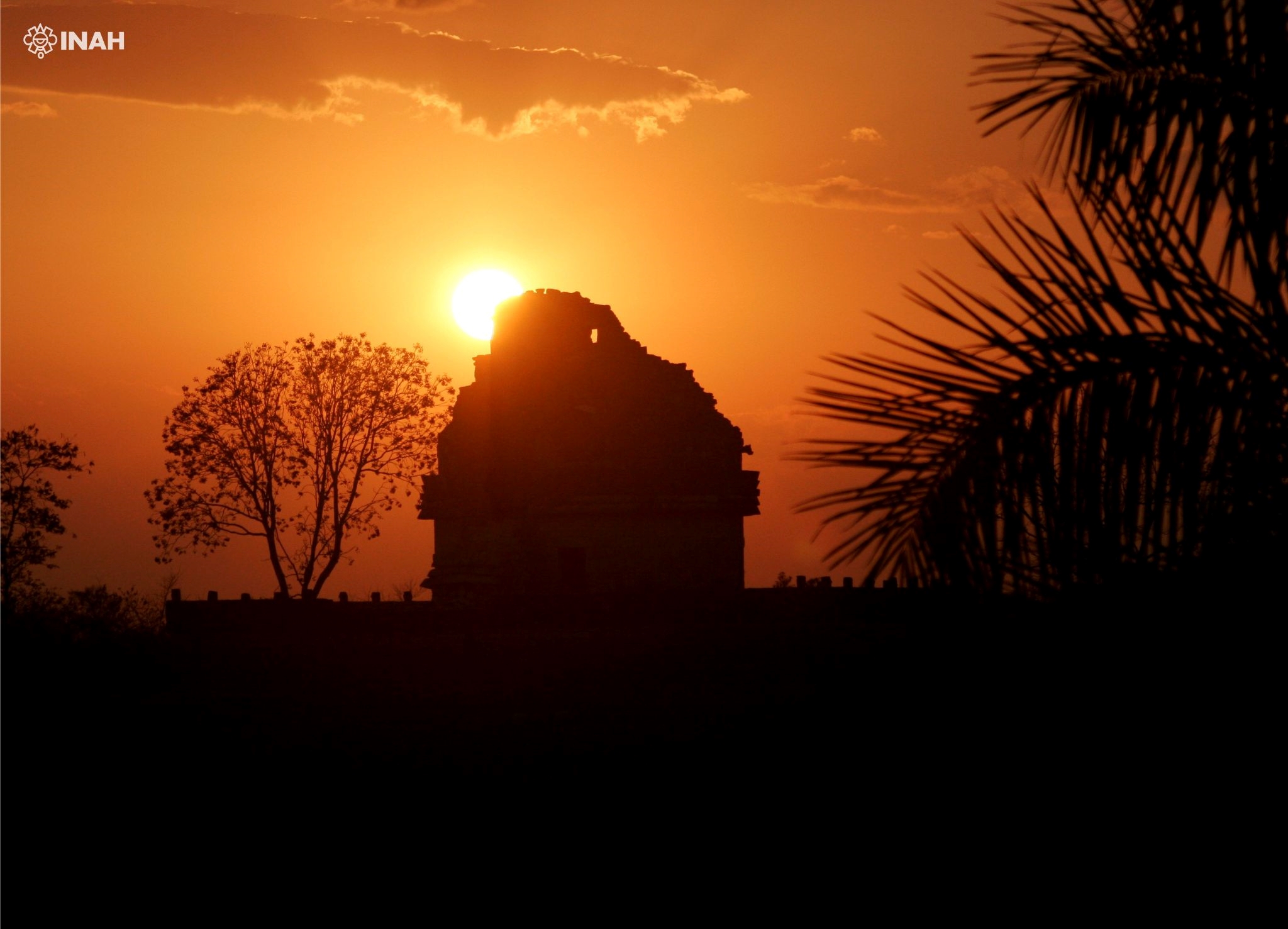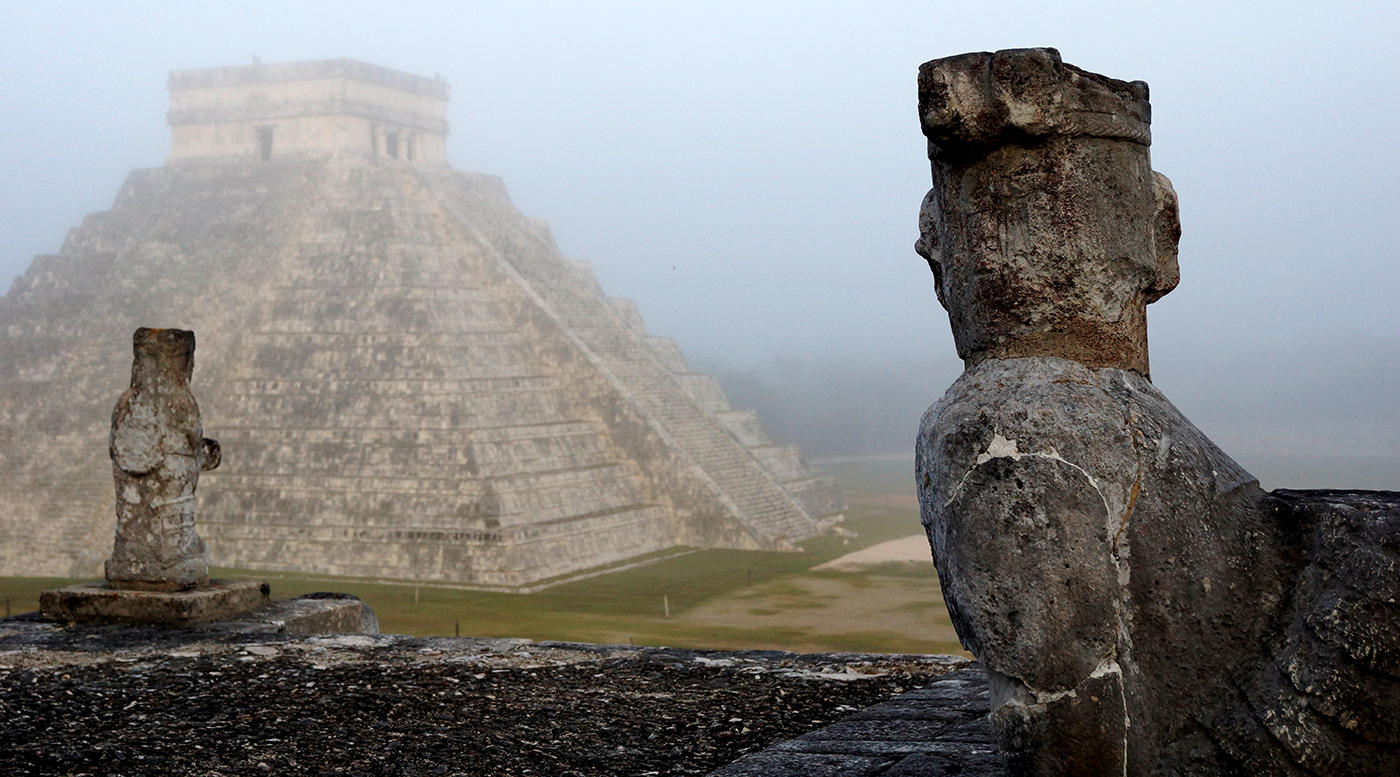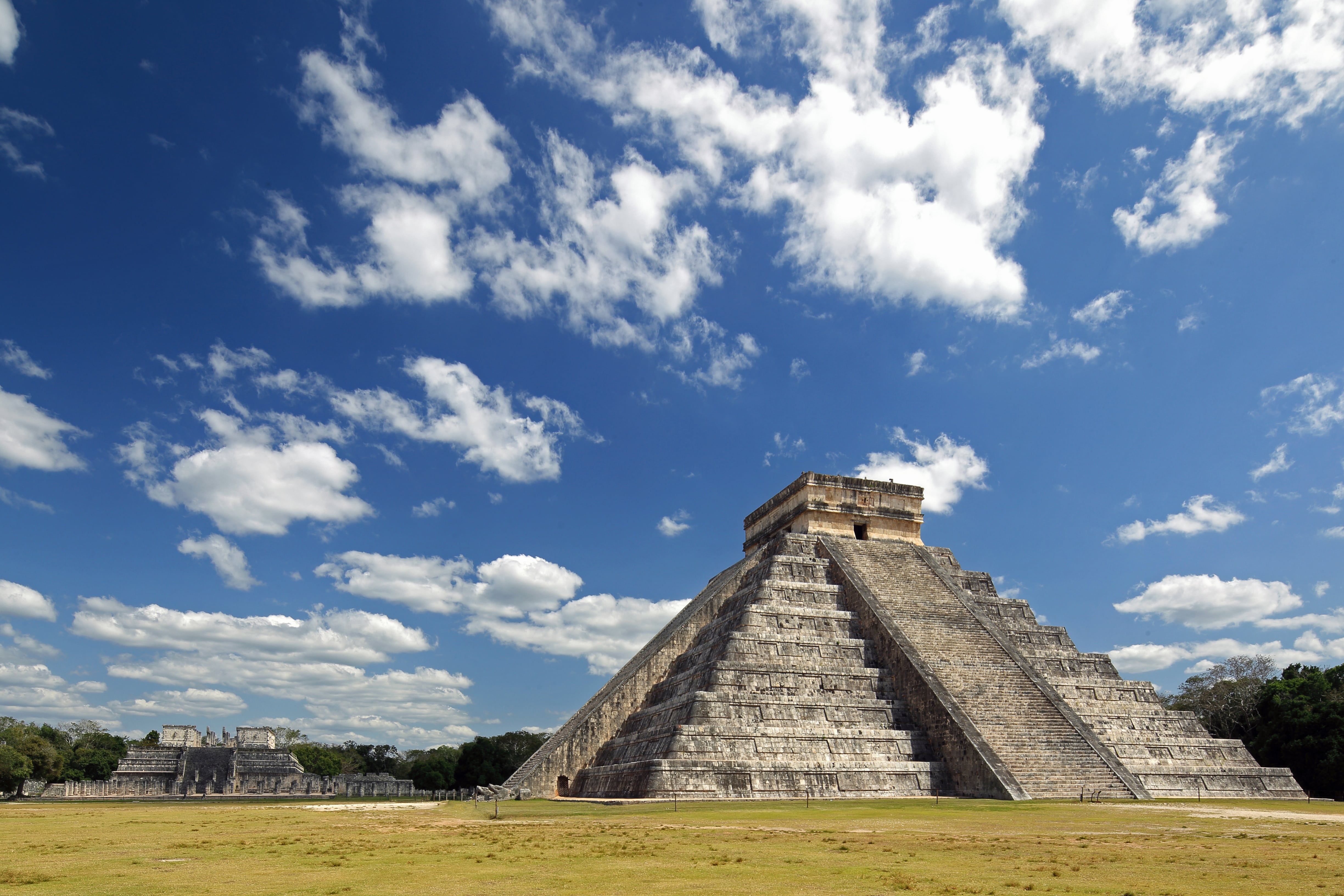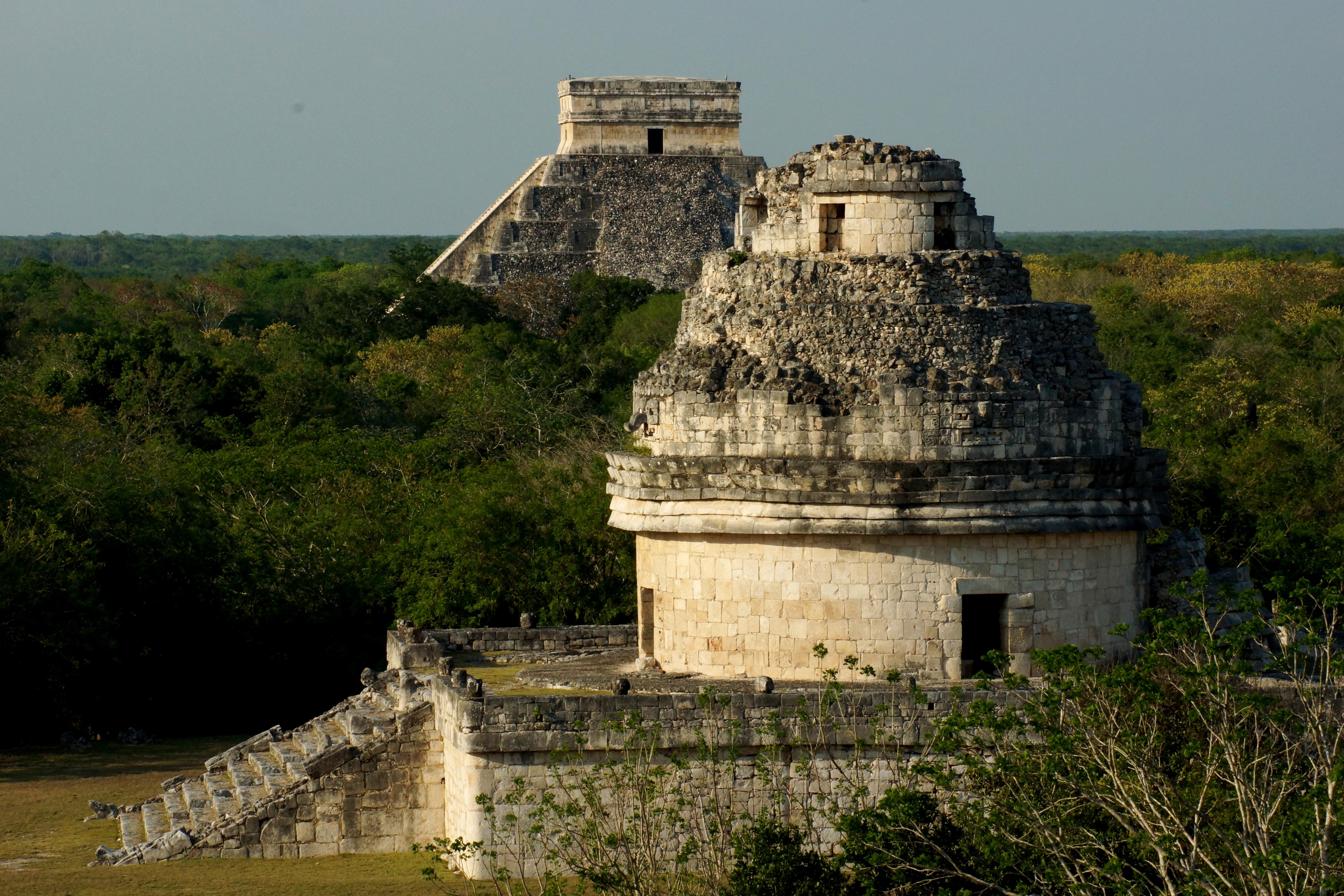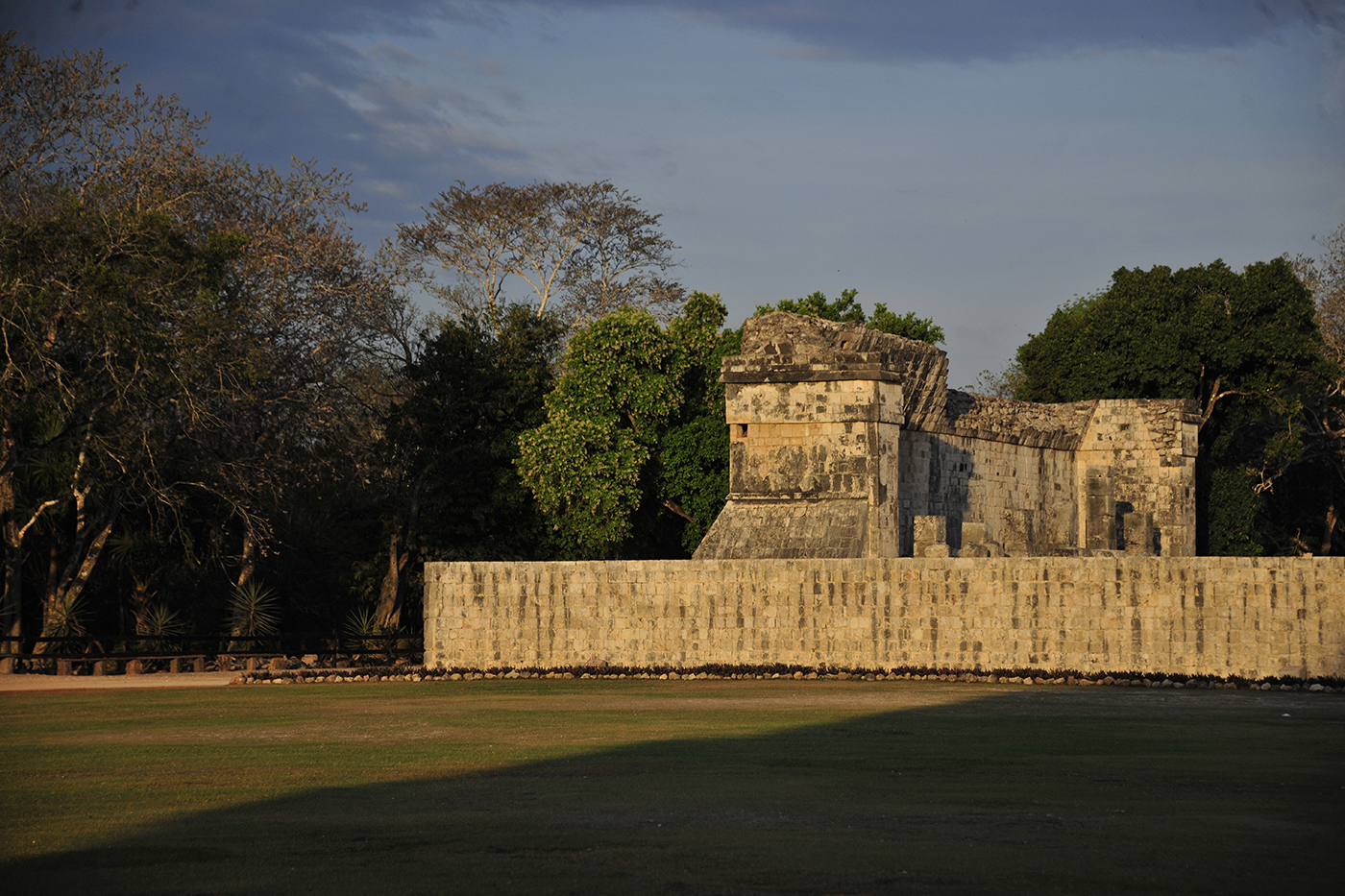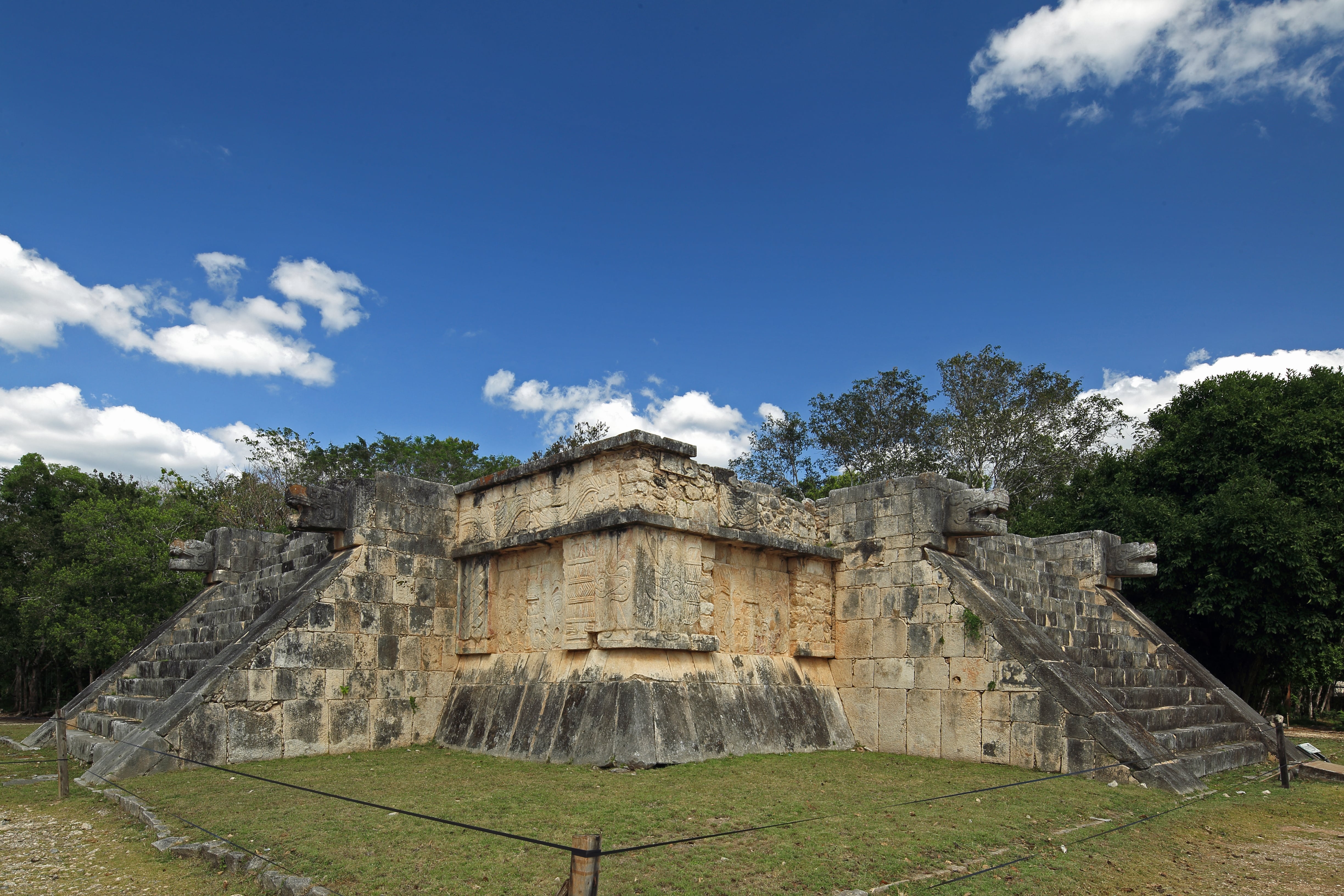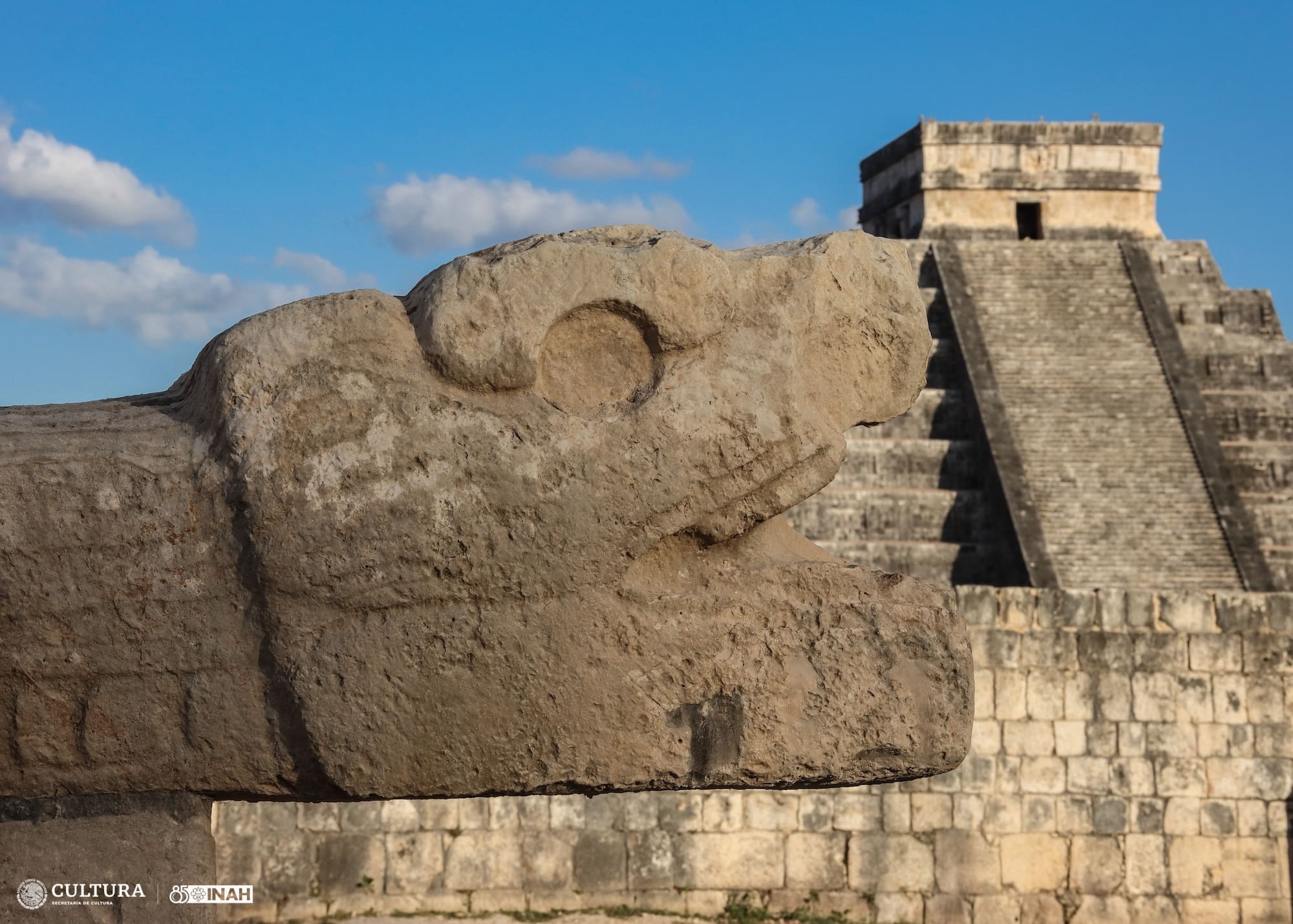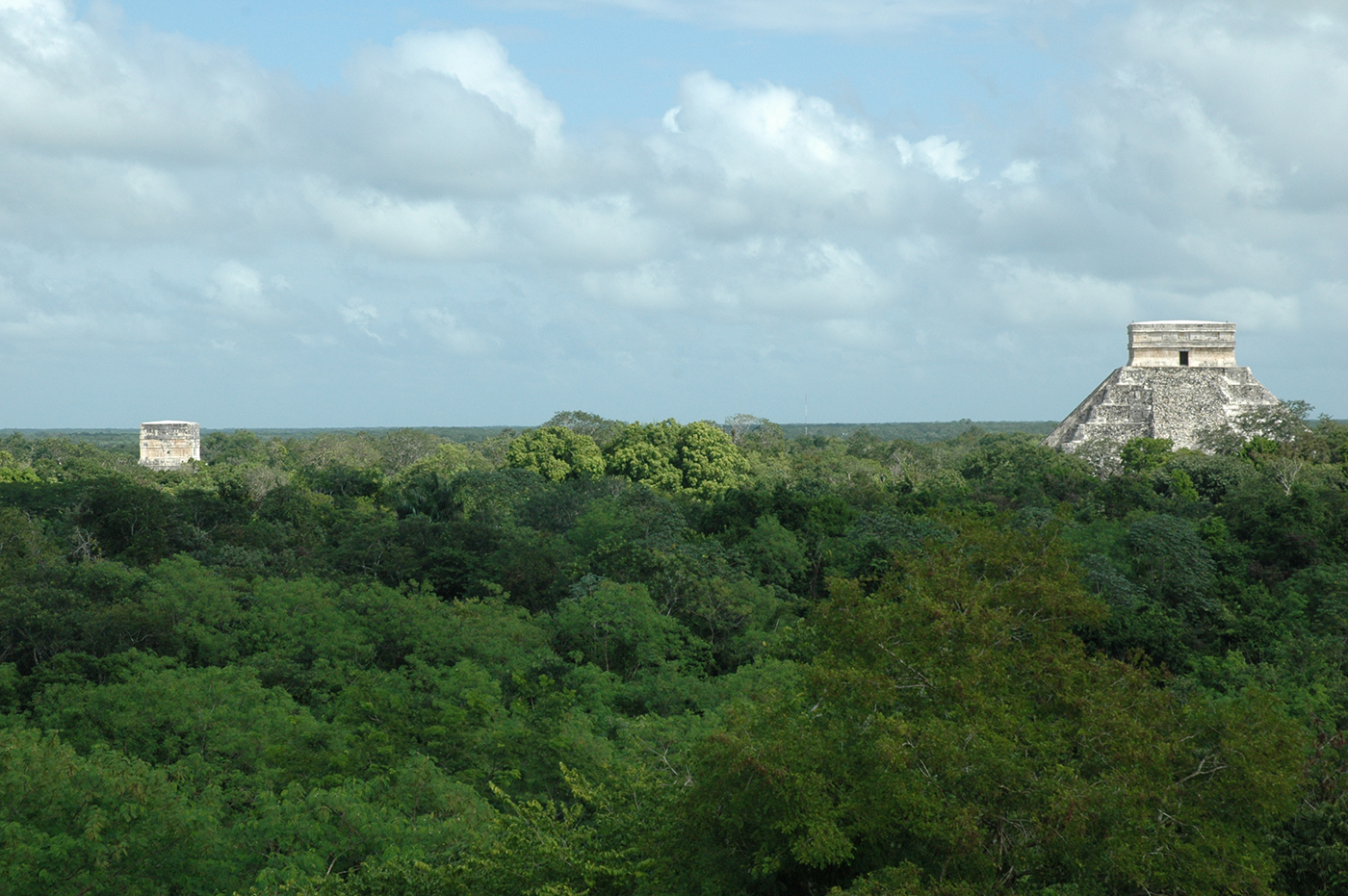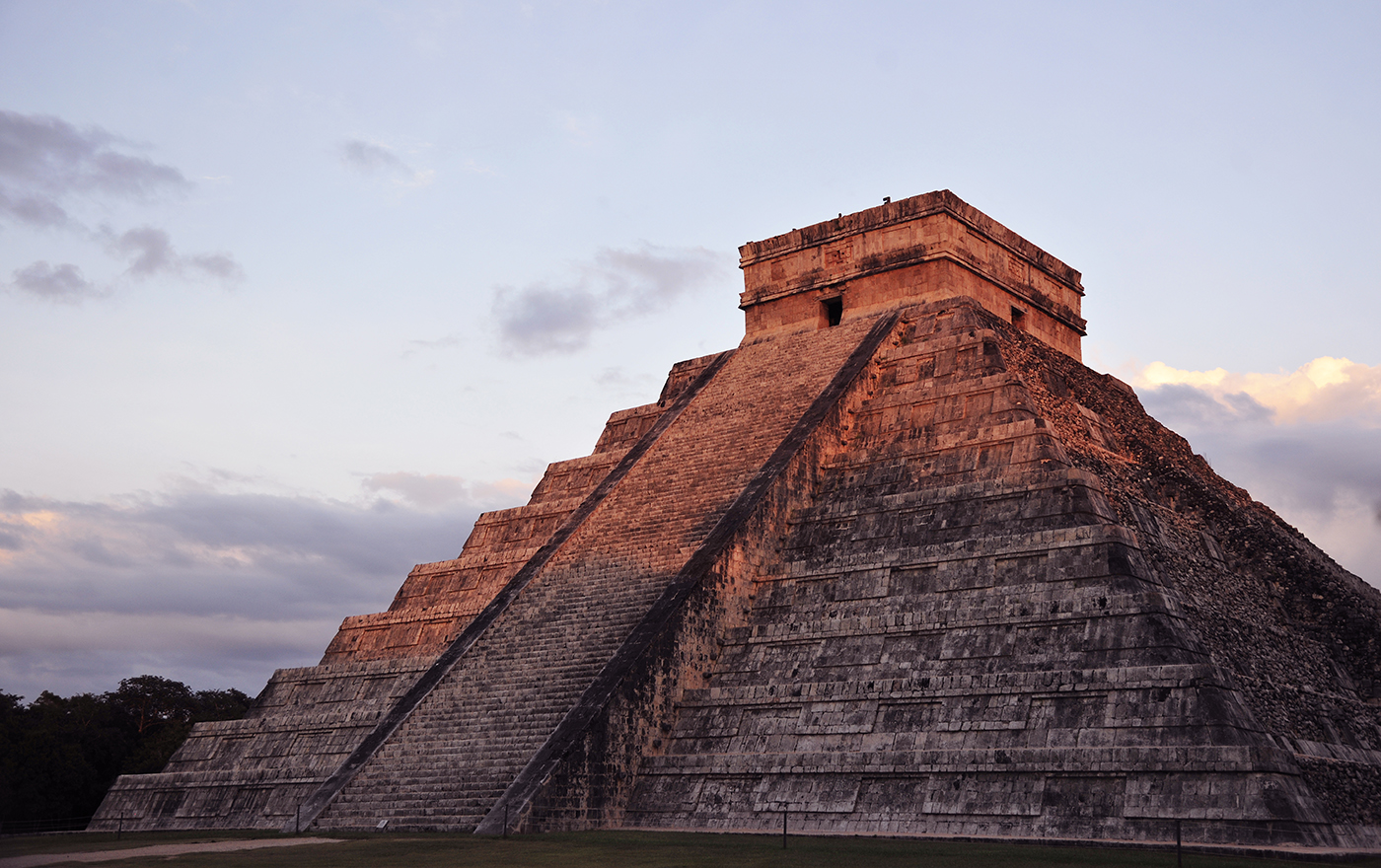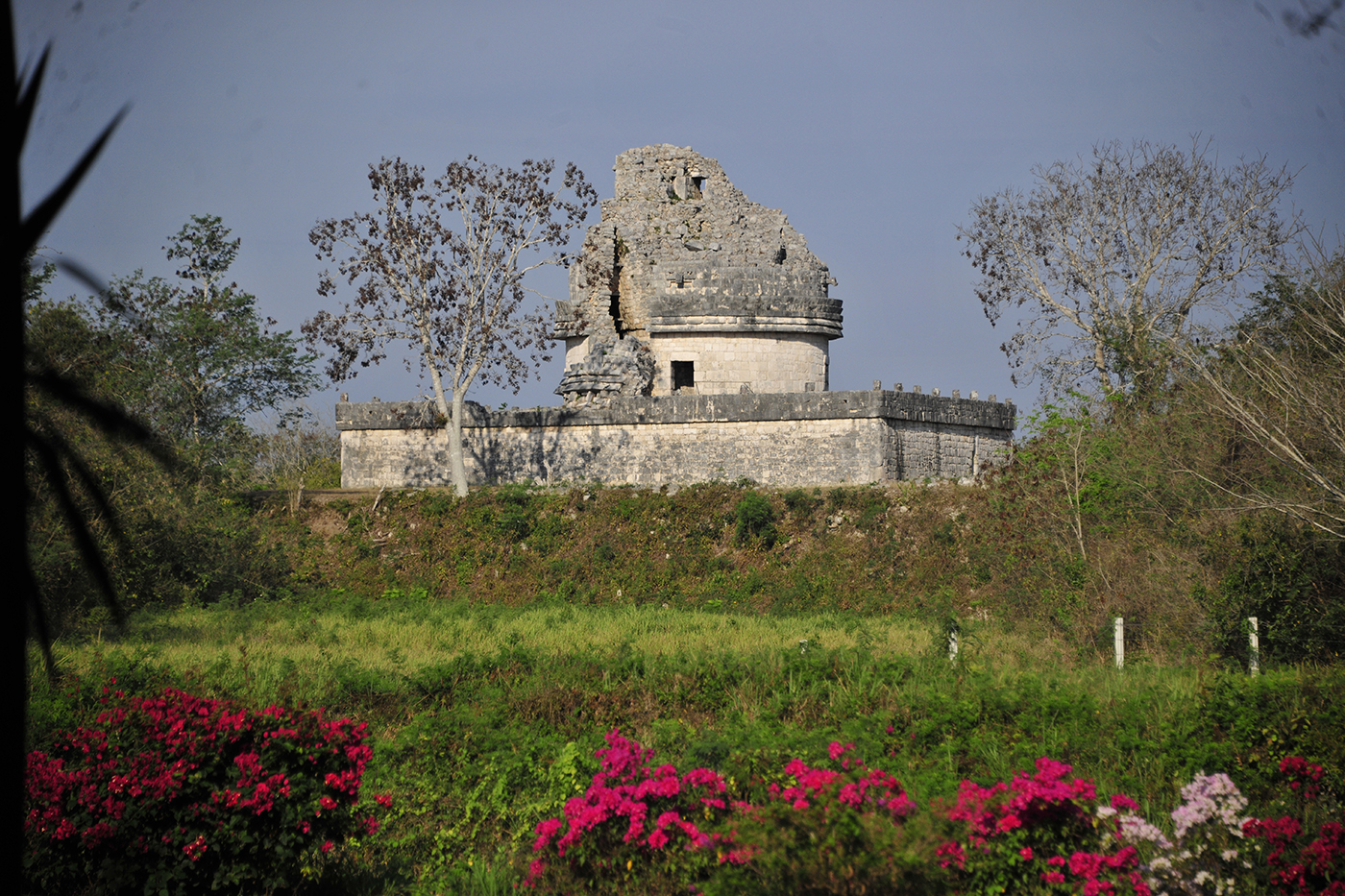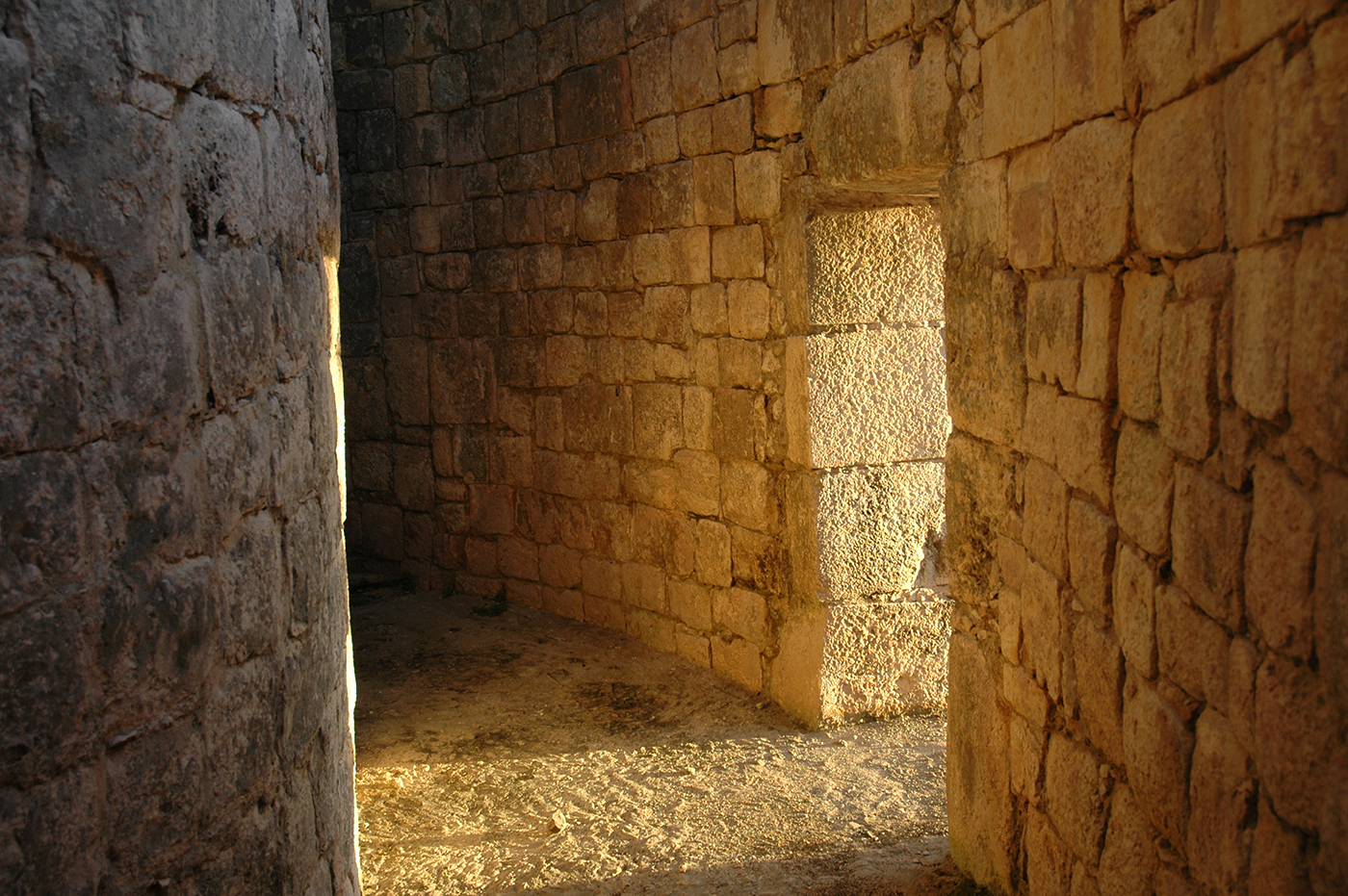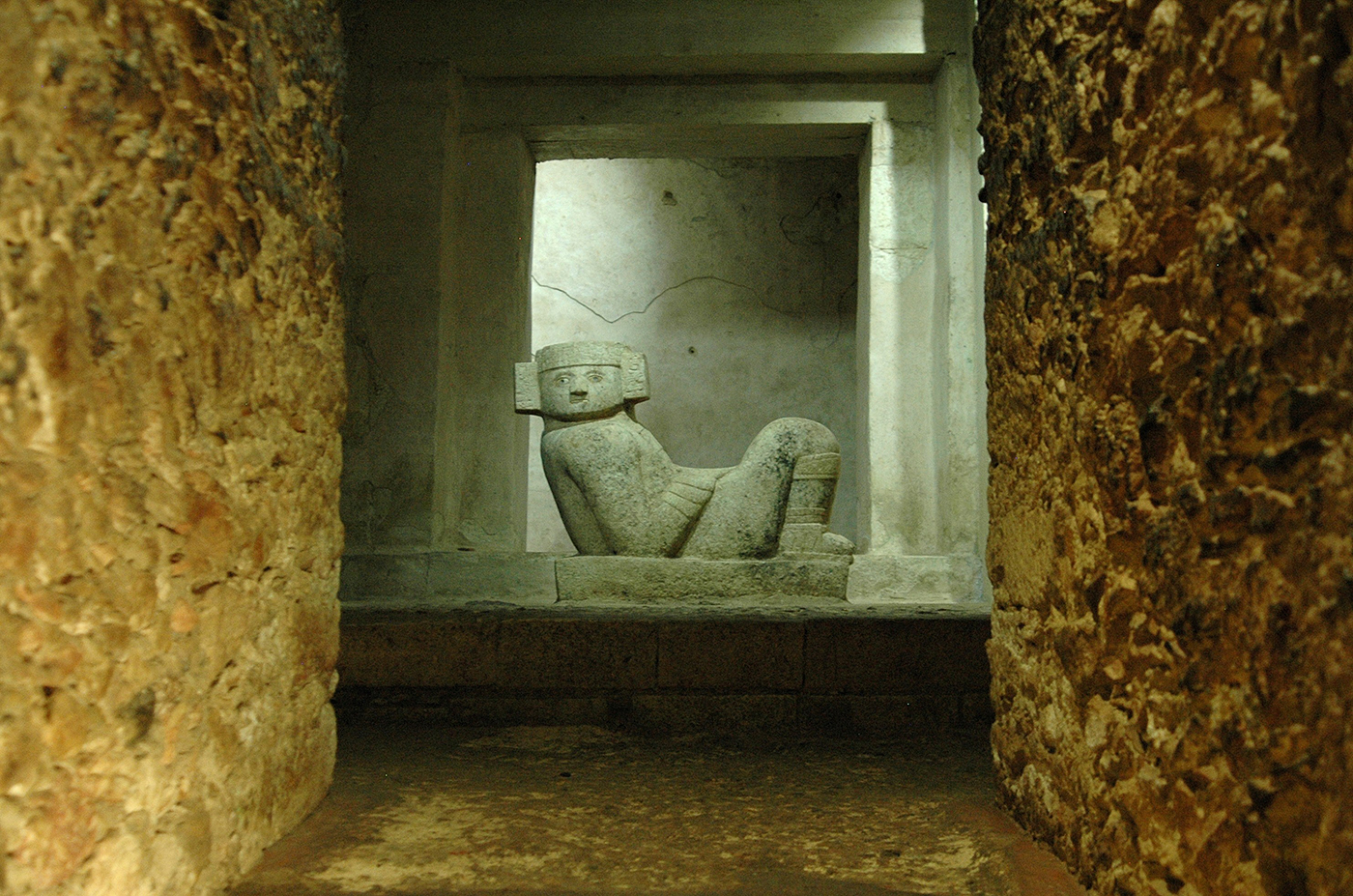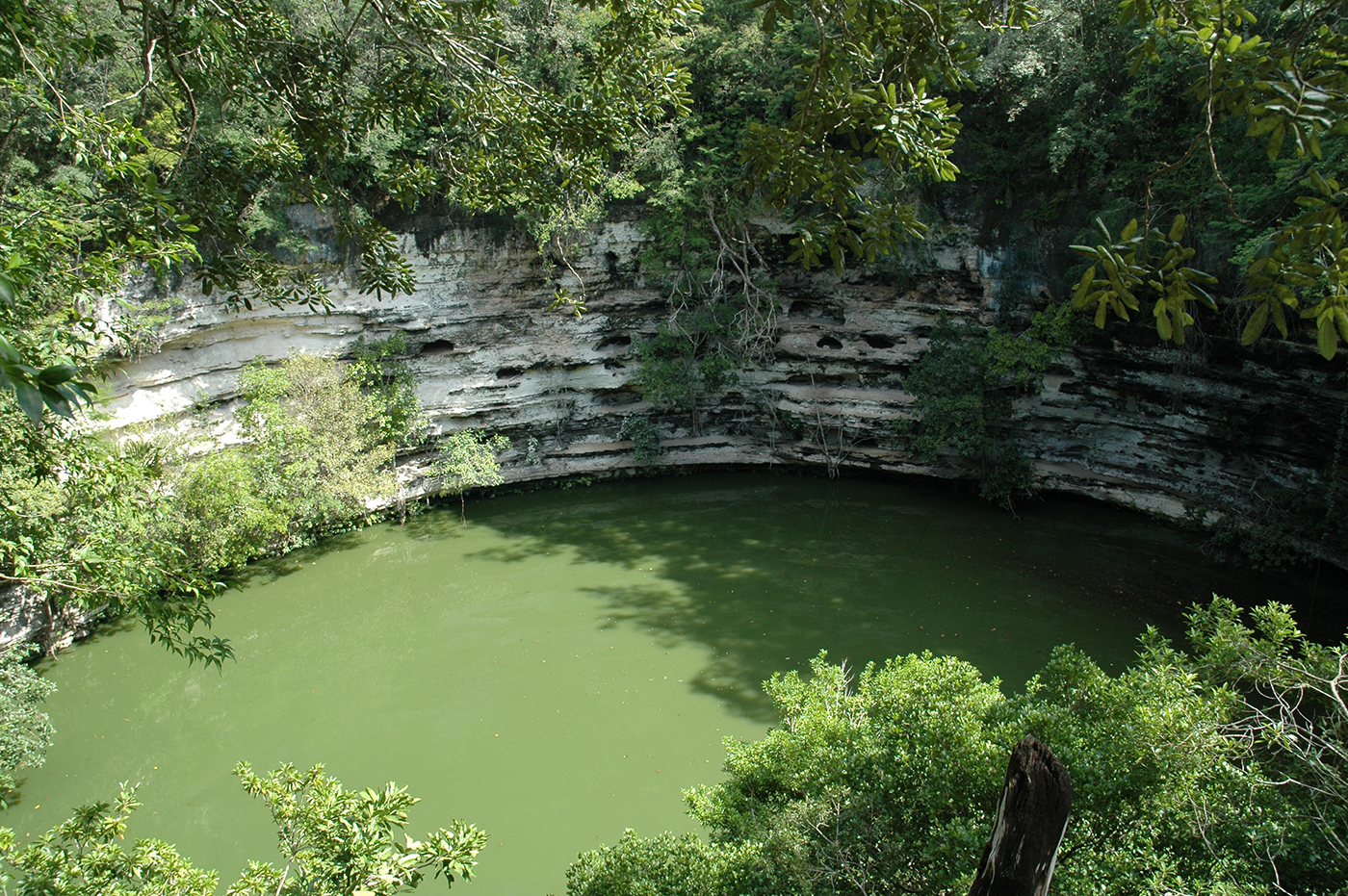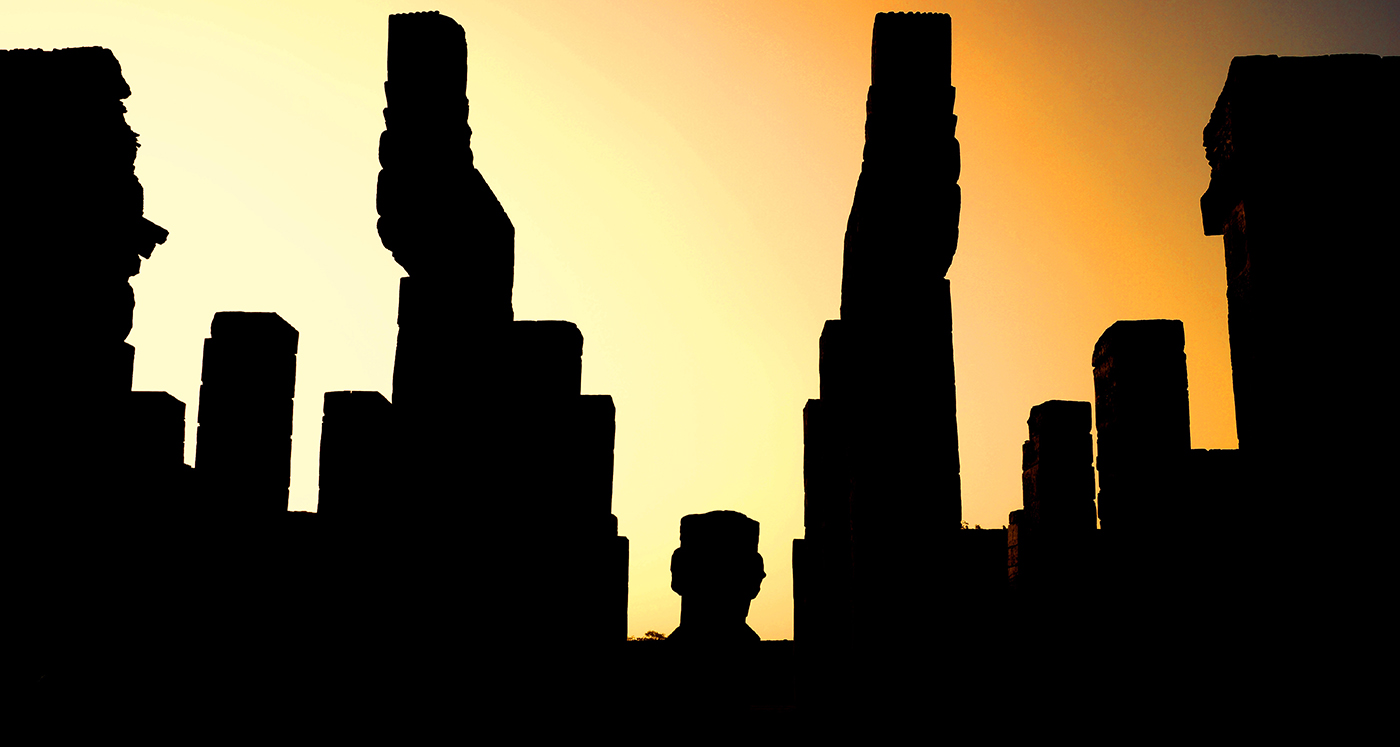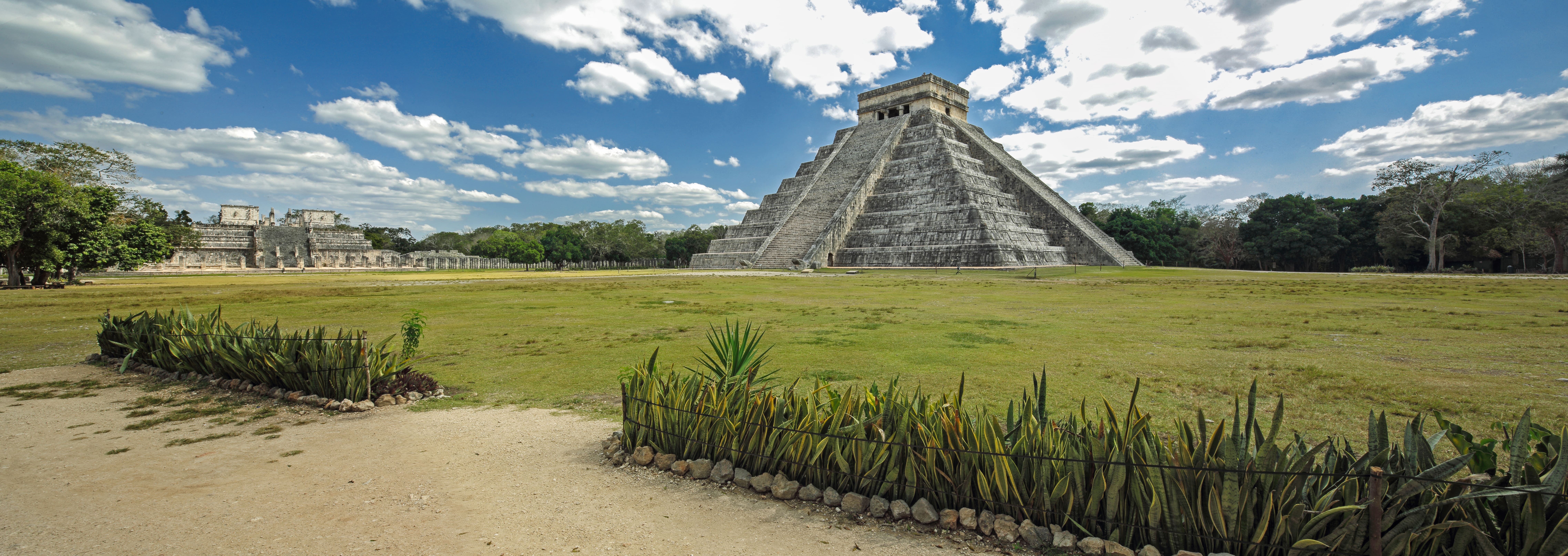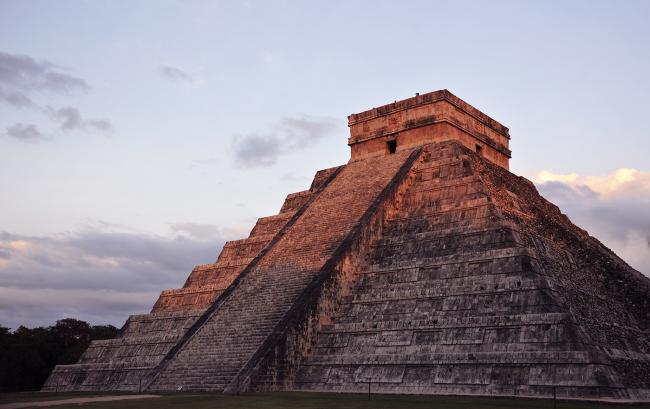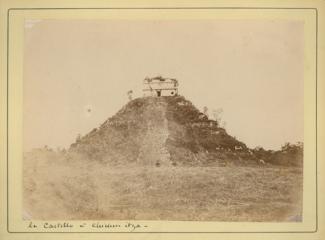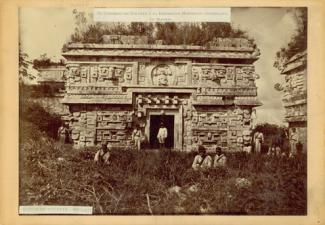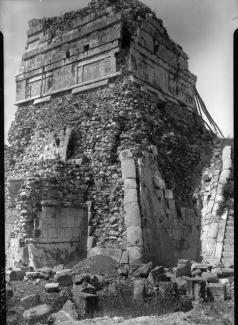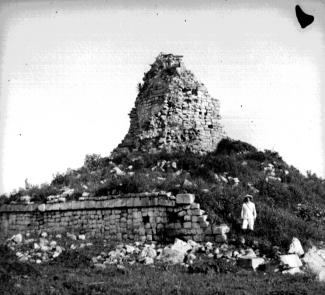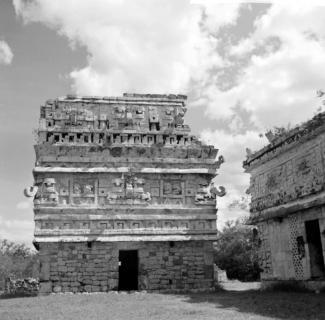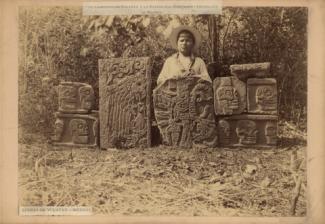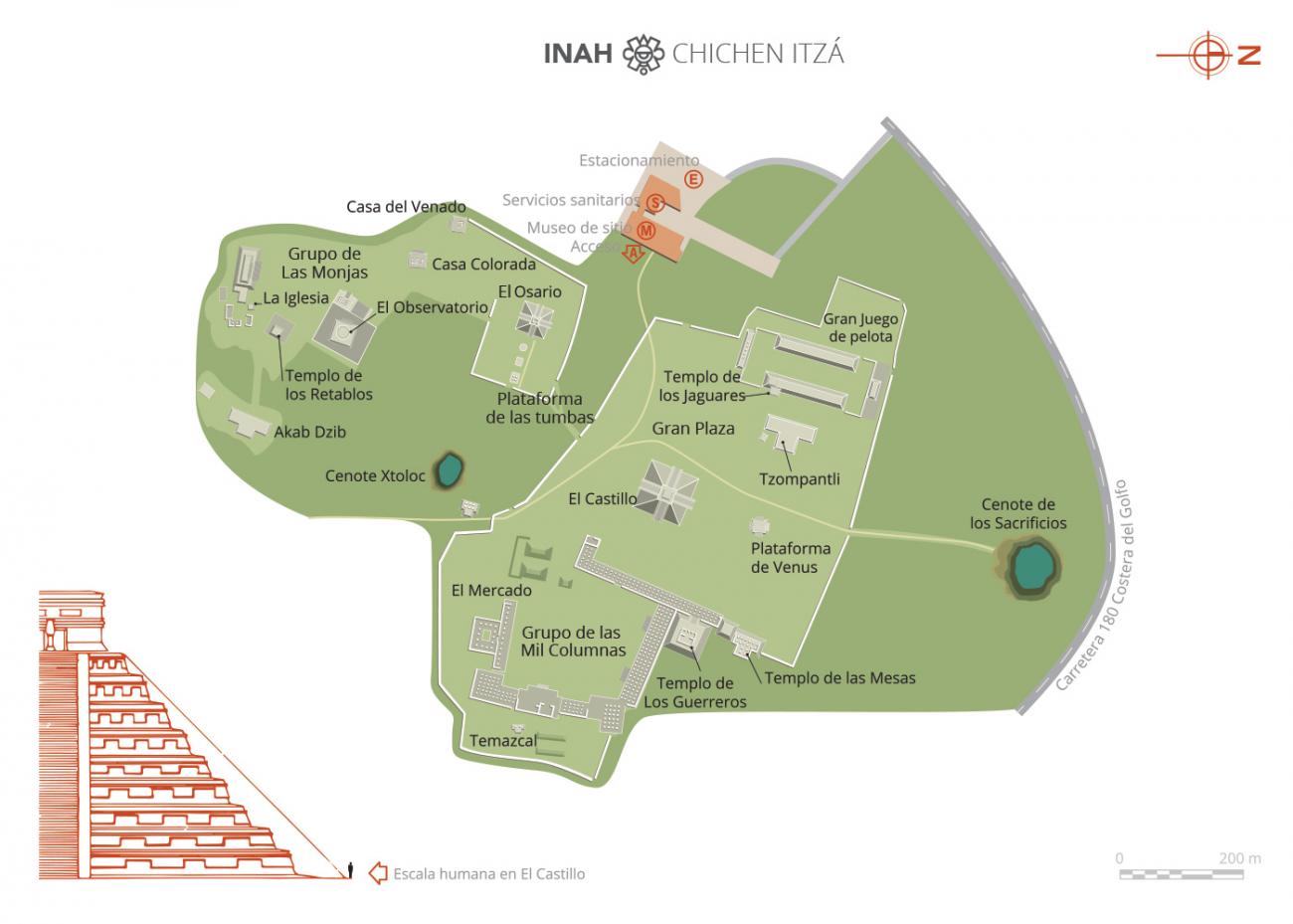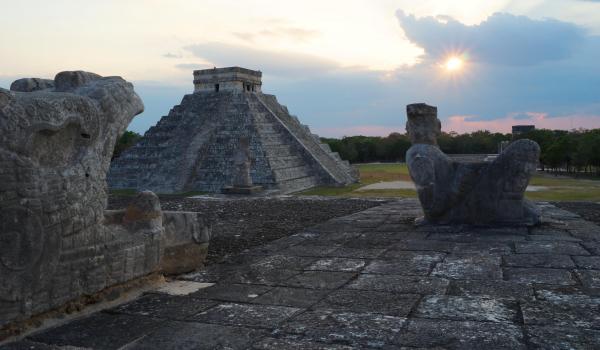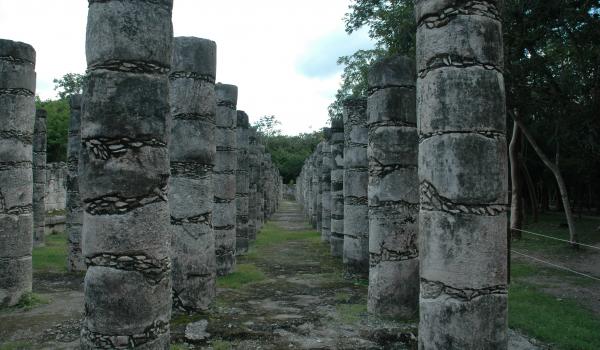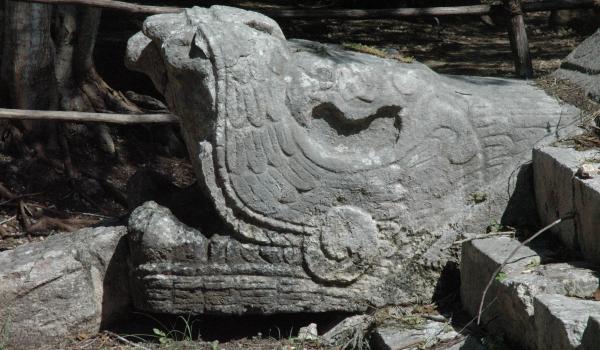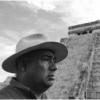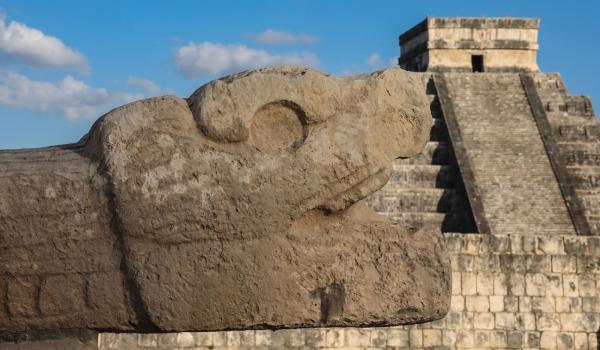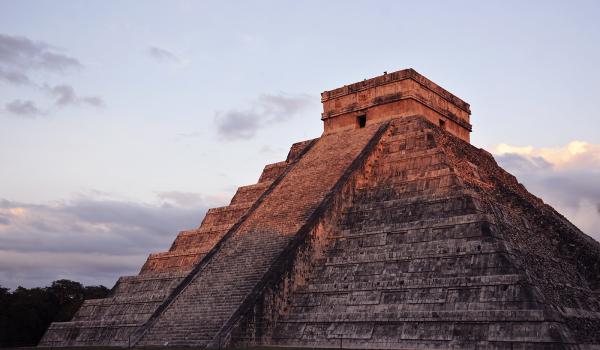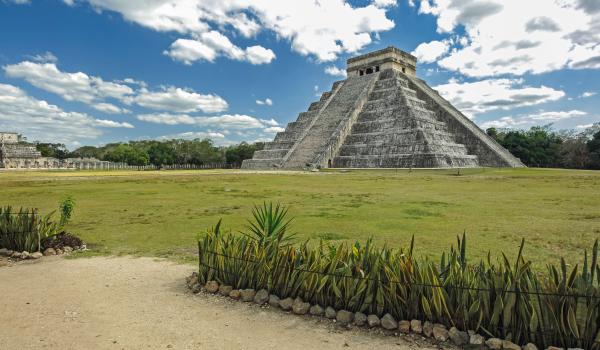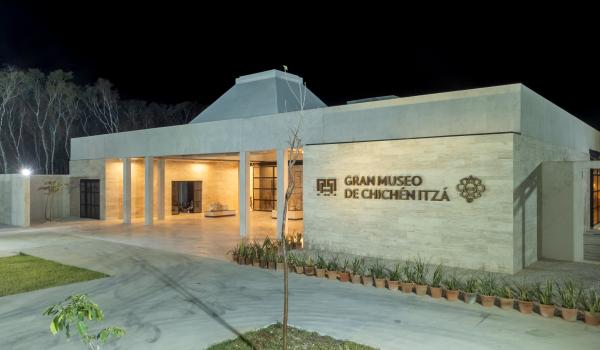The main buildings are located on an enormous artificial platform. The buildings that stand out in this space are the Castle, the Ball Court, the Temple of the Great Tables, the Temple of the Warriors, the Tzompantli, the Platform of Eagles and Jaguars, and the Platform of Venus. The Main Plaza is connected to the Sacred Cenote by a sacbé to the north side.
The buildings found in this space present architectural features typical of the Mayan area that merge with features of central Mexico, which has led some researchers to catalog this fusion as a Mayan-Toltec style.
The Castle: Undoubtedly the most imposing construction of Chichén Itzá. It is located in the western sector of the Great Leveling: a quadrangular base with nine staggered bodies of inclined faces and decorated with panels, stairways and alfardas on its four sides (although the stairway in the lower part of the building, whose alfardas are associated with snake heads, suggests that the north side was the main side of El Castillo). On top of the basement is a temple with four entrances; the main façade faces north and houses an enclosure with a front room and a back room. El Castillo had the function of a temple and is associated with Kukulkan, a character who may have been the ruler of Chichen Itza in the tenth century AD and who, after his death, served as a deity linked to the spring and autumn equinoxes. The Castillo dates from the Terminal Classic period; it was built over a first temple that has a stairway with alfardas, but without serpent heads on its north side. This stairway ends at the top in a temple with two chambers, one north and one south. A sculpture of Chac Mool was found in the north chamber and a jaguar throne painted red in the south chamber. The feline rests on its four extremities, its head is on its left side and a turquoise and jade disk was found on its back, the animal seems to have been sacrificed by means of fire. Other felines in walking position are appreciated in the friezes of the substructure of El Castillo and are directed towards the front part of the construction.
Ball Court: It is located in the northwest corner of the plaza. Seen from the interior, it is composed of two elevated and parallel walls in the center of which are embedded two stone rings and benches adorned with bas-reliefs. At each end of the court there is a pavilion or grandstand. In the east wall, the Temple of the Jaguars is located, in whose later part is a totally sculpted chamber; in her polychrome representations of warriors, priests and of multitude of animals and aquatic plants are observed, which gives to understand that the ball game, besides to have been a sport event, also had religious character.
Temple of the Jaguars: Located on the east platform of the Great Ball Court, this small temple is one of the most remarkable of Chichén Itzá, both for its architectural design and its rich and complex decoration, undoubtedly associated with the rite of the game. The temple at the top shows two large columns in the form of rattlesnakes with open jaws. The friezes are decorated with bands representing intertwined snakes, jaguars and shields. In the interior of the temple there were mural paintings with war scenes.
North Temple of the Ball Game: It is located at the end of the Ball Game; surely ritual activities were carried out there. In the interior of this temple there is a panel with reliefs that show different scenes in which more than 40 characters participate.
Temple of the Warriors: This construction, of quadrangular plant, presents four staggered bodies and a single stairway in its western side, flanked by alfardas. Two standard bearers finish off the upper part of the alfardas. The stairway begins on a platform with pilasters, which show effigies of warriors, and ends at the top, where there is a large room that houses several pilasters. A sculpture of Chac Mool and two large serpent heads, with open jaws and forked tongues, show the access to the upper room of the building. In the interior of this room, in its back side, there are several stone slabs supported by sculptures called atlantes. The front of the Temple of the Warriors is decorated both by representations of the narigod god of rain, Chaac, and the snake-bird-man.
Platform of Venus: Low platform with staircases on its four sides, by which the upper part is accessed, where there are no constructions. The staircases of both platforms have alfardas that finish in their superior part with heads of snakes of great size. The Venus Platform is located directly to the north of El Castillo, and has as main motif stars cut in half, which are representations of the planet Venus, as the celestial body of the morning.
The Tzompantli: This construction is a low platform with a stairway on its east side, whose exterior façade has, as its main motif, the representation of skulls. The name of this structure comes from the Nahuatl tzompantli which means wall of skulls.









